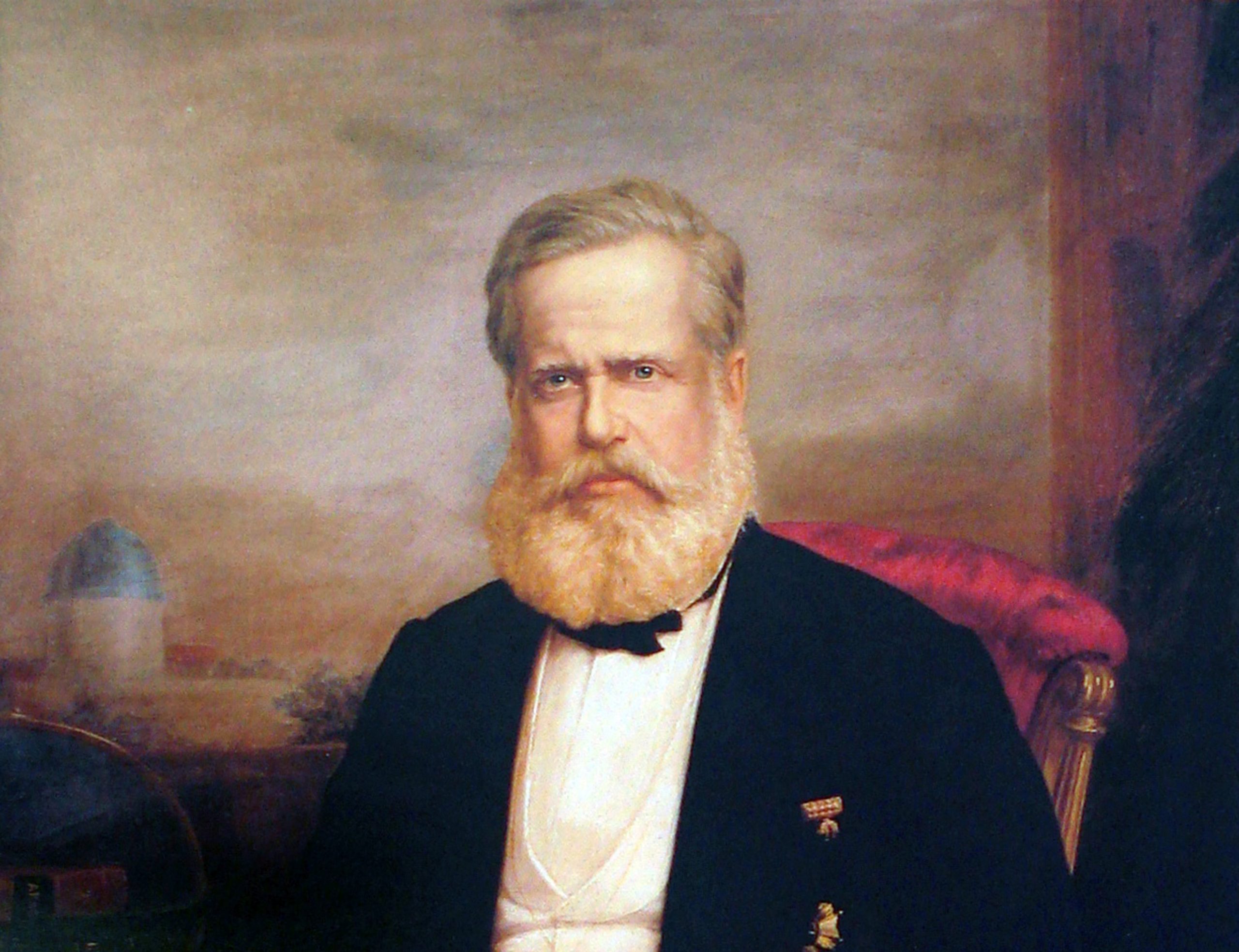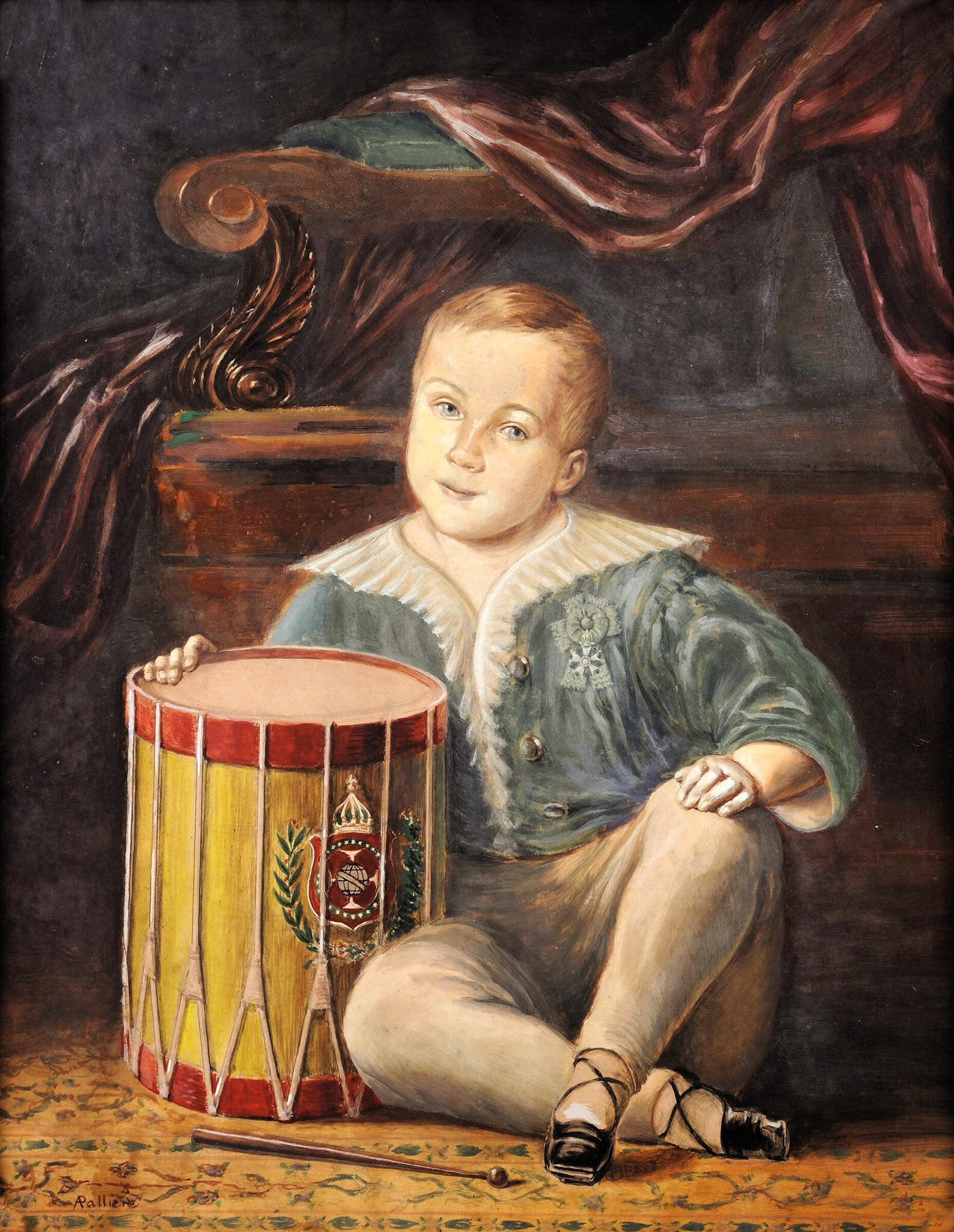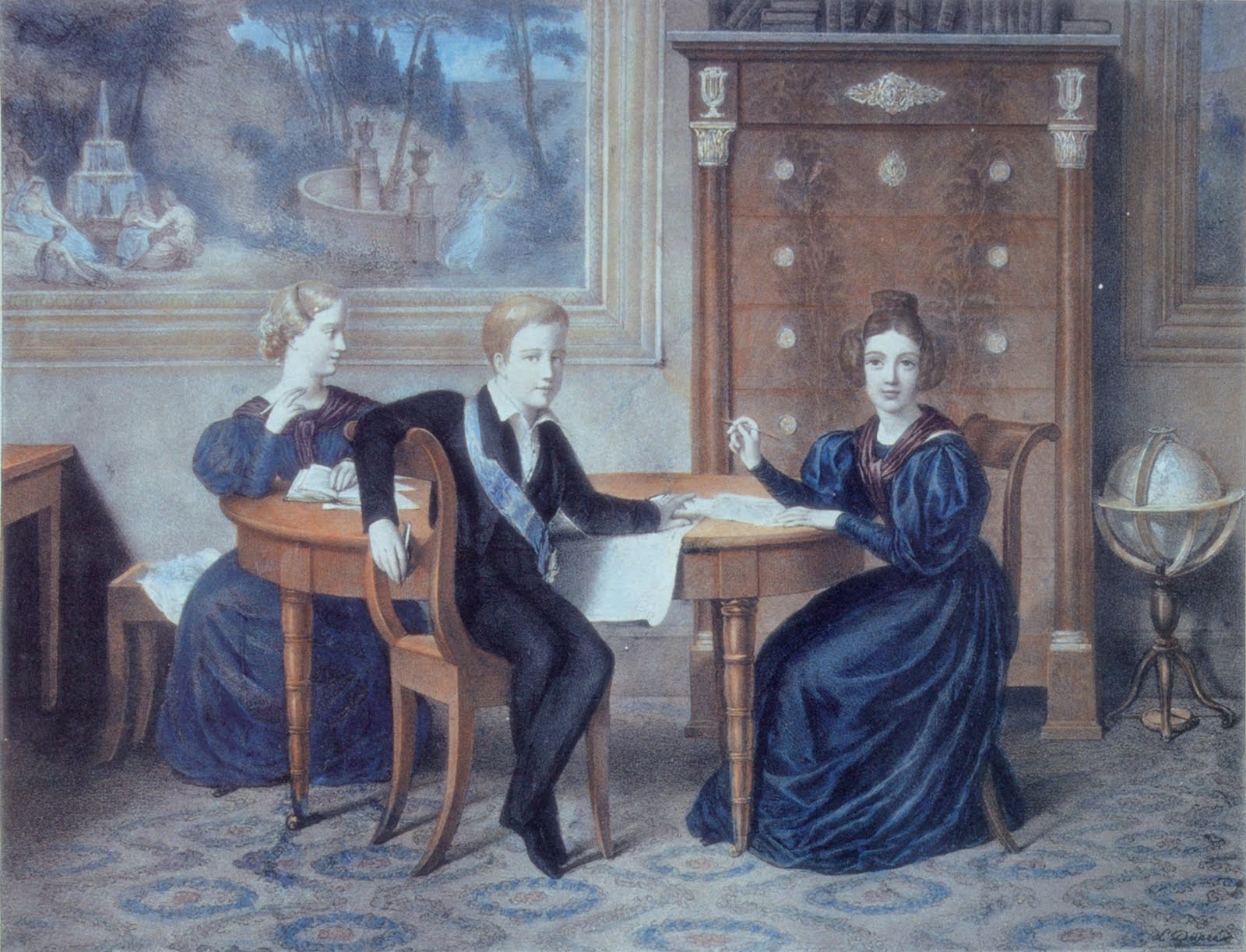Discover the biography of Dom Pedro II! Dom Pedro II was the second and final Emperor of Brazil. He became regent prince at the age of five when his father Dom Pedro I abdicated the throne. At the age of 15, he was declared of age and crowned Emperor of Brazil. His reign, which lasted almost fifty years, began on July 23, 1840, and ended on November 15, 1889, when a Military Coup took place to establish the Republic.

Dom Pedro II was born at São Cristóvão Palace (Quinta da Boa Vista), Rio de Janeiro, Brazil, on December 2, 1825. He was the son of Emperor Dom Pedro I and Empress Dona Maria Leopoldina, and was given the name Pedro de Alcântara João Carlos Leopoldo Salvador Bebiano Francisco Xavier de Paula Leocádio Miguel Gabriel Rafael Gonzaga de Bragança.
His mother, Empress Dona Leopoldina, who was already ill, passed away in 1826, leaving Pedro in the care of the chief lady-in-waiting, Dona Mariana Carlota de Verna Magalhães, later Countess of Belmonte.
Pedro de Alcântara was the fourth child of the imperial couple, but with the death of his older siblings, he became the heir to the Brazilian throne and, on August 2, 1826, he was recognized as the heir to the imperial crown.

His father, Emperor Dom Pedro I, abdicated the throne on April 7, 1831, and returned to Portugal, leaving Pedro as the “regent” at the tender age of five.
To guide his son’s education, Dom Pedro I appointed José Bonifácio de Andrada e Silva as the boy’s tutor. In 1833, José Bonifácio was replaced by Manuel Inácio de Andrade Souto Maior, Marquis of Itanhaém.
Prominent masters of their time were selected to educate the future emperor. He studied Portuguese, literature, French, English, German, geography, natural sciences, painting, piano and music, fencing, and horseback riding.
Following the abdication of Dom Pedro I and the minority of the emperor, Brazil was governed by different groups that comprised the ruling class and vied for political power.
The Regency Period, which spanned nine years from April 1831 to July 1840, went through four regencies: Provisional Triumvirate Regency, Permanent Triumvirate Regency, Feijó’s One Regency, and Araújo Lima’s One Regency.
The regency period was marked by violence and social and political conflicts. The urban and rural impoverished classes took up arms and engaged in armed struggle, demanding better living conditions.
Among the revolutionary movements that took place in different provinces, notable ones include: the Cabanagem, the Sabinada, the Balaiada, and the Farrapos War.

Faced with social uprisings that threatened and frightened the agrarian elite, the liberals and conservatives concluded that only the presence of an emperor with moderating power could restore order.
In 1834, Dom Pedro I passed away in Portugal. In 1840, the struggle for the emperor’s coming of age began, as he was only 15 years old at the time.
On July 23, 1840, Pedro was declared of age. This event became known as the “Majority Coup.” With this maneuver, the Regency Period (1831-1840) came to an end, and the Second Reign began. On July 18, 1841, Dom Pedro II was crowned Emperor.
On September 4, 1843, Dom Pedro II married Princess Teresa Cristina of the Two Sicilies. The marriage took place when he was 18 years old, and the couple had a fruitful union that lasted until Pedro’s death. Teresa Cristina was known for her intelligence, strong personality, and dedication to the family.
Together, Dom Pedro II and Teresa Cristina had four sons and two daughters. Their firstborn was Afonso Pedro, who tragically passed away at the tender age of two. Their second son, Pedro Afonso, also had a premature death, shortly after birth. However, their other children played important roles in Brazilian history.
Their eldest surviving son, Pedro de Alcântara, Prince of Grão-Pará, was born in 1848 and was the heir to the Brazilian throne. Unfortunately, Pedro de Alcântara suffered from a mental illness that prevented him from assuming the role of Emperor. This led to a succession crisis in the final years of Dom Pedro II’s reign.
Princess Isabel, the couple’s eldest daughter, played a prominent role in Brazilian history. She became known as the “Redeeming Princess” for her efforts in the abolition of slavery in Brazil. Princess Isabel acted as regent during her father’s travels and was widely respected for her intelligence and compassion.
Their other children, Princess Leopoldina and Prince Pedro Augusto, also made contributions to Brazilian society, although less prominently than their older siblings.
The marriage and offspring of Dom Pedro II were important for the continuity of the imperial lineage and for Brazilian history. They left a lasting legacy, both in the political and familial realms.

Following the Military Coup of 1889, Dom Pedro II and his family were forced into exile. They left Brazil and sought refuge in different countries, spending most of their exile in Europe.
Initially, the imperial family settled in Portugal, where they received support from the Portuguese royal family. Later, they moved to France and lived in Paris. During their exile, Dom Pedro II and his wife, Empress Teresa Cristina, faced the sadness and longing for their beloved Brazil.
In his exile, Dom Pedro II never abandoned his passion for knowledge and culture. He continued to study and engage in intellectual matters, maintaining contact with European scholars and intellectuals. His presence and wisdom were admired by many, even outside of Brazil.
Unfortunately, Dom Pedro II’s health began to deteriorate during his exile. In 1891, he was diagnosed with heart failure. The death of his beloved wife, Empress Teresa Cristina, in 1889, also deeply affected his heart.
On December 5, 1891, at the age of 66, Dom Pedro II passed away in Paris. His death was a moment of great sadness for Brazilians and those who admired him worldwide. His body was repatriated to Brazil in 1921 and received a solemn funeral with state honors.
The exile and death of Dom Pedro II marked the end of an era in Brazil. His departure left a void in the country’s political and cultural life. However, his legacy as an enlightened leader and advocate for education, science, and culture continues to inspire generations to this day. His memory is preserved as a symbol of the greatness of the Brazilian Empire.

Matheus Araújo
Matheus is an entrepreneur at Araujo Media, where he serves as CEO and Creative Director. He shares analyses on his personal blog "matheusaraujo.me" and is currently pursuing a degree in Advertising and Propaganda. Moreover, he has a passion for history, particularly that of Brazil, which led him to become the founder and editor of the Brazilian History portal.
